
In all of the Silent Hill games, the player's goal is usually clear. In the first game, Harry Mason has to find his daughter Cheryl. What ISN'T clear are the circumstances that guide Harry toward his eventual success or failure. The game reaches Lynchian levels of confusion.
The first ever plot analysis for Silent Hill (or the first one to be distributed) was written by Dan Birlew, AKA President Evil. It processed all of the visual and contextual clues from the game to reach almost satisfying conclusions for the mysterious motivations for the characters and explanations for the heady, symbolist endings.
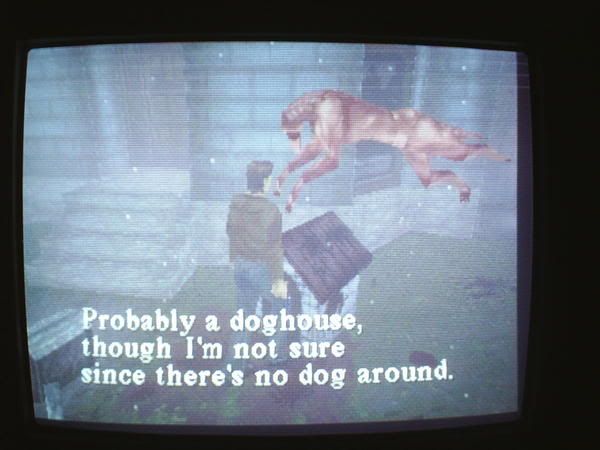
Reading it felt like playing the game all over again, and was a really intense experience for me. None of it was canon, but it made perfect sense logically and emotionally. I felt rewarded. The game must have been vague exactly so that the people who were enthralled by it could seek their own answers. As someone who hadn't even started high school yet, Team Silent and Mr. Birlew gave me my first real exposure to critical writing, analytical thought and semiotics. For this reason, Silent Hill - like Ren and Stimpy, Evangelion and The Simpsons - taught me much about living, and would become a permanent part of my psyche.
Silent Hill 2 would only raise the stakes, as the development team discovered how to tell a psychological and emotional story without being confounding about it. Upon completing it I was scared at night for days, just like last time, but I was sad too.
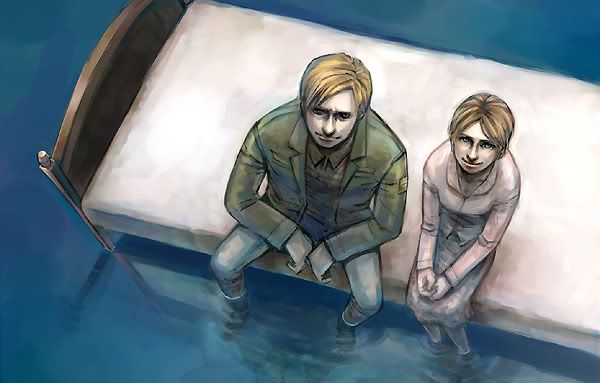
I said that the goal in Silent Hill is usually clear - in both games, the hero is to save their loved one. It's true, the mission doesn't really change, but everything else changes around it. As details come to light, as the world grows more and more oppressive, the road grows darker, the protagonist must eventually ask: "Do I really love her?" I didn't know it until now, but at that point in time, Silent Hill was a series about love. Even when it wasn't specifically romantic or familial love, it was about the intense passions of every character, not just the hero. The games were passionate.
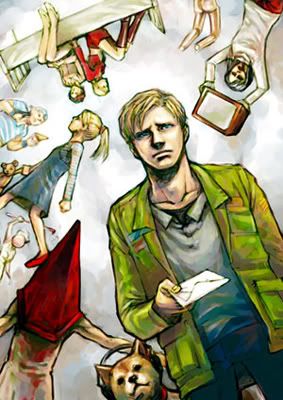
Silent Hill 3 explained and confirmed the story of Silent Hill 1, permanently altering the nature of the series. To be fair, they handled it surprisingly well. In the end, it didn't really bother me at all that the character I was playing as was the reincarnation of a girl who was once simultaneously another, different girl.
In fact, Heather's character is the best thing I can say about Silent Hill 3, not only because linking her directly to the events of the first game is a smart way to bestow on her the responsibility of dealing with whatever new evil, she's also totally different from our previous two protagonists. She's gutsier, irreverent, more like the player controlling her. She challenges the horrors of Silent Hill by trying to remain unfazed - so when she DOES get scared and show some vulnerability, you know shit is getting real. Though it's also funny when Silent Hill becomes the OTHER Silent Hill she's just like, "Oh, hell."

The game also has the same quality of fantastic set pieces the first two games are known for, my personal favorite being the mirror in the hospital which shows a tainted reflection of the room that slowly seeps into the room itself, killing Heather. It's just full of the same wonderful visual ideas we've come to love, like the love letters to Heather that disappear when you return to their locations, suggesting that they're being moved around by their writer.
The main problem, like I said, is that it's a sequel to the original. Sure, then they were able to make references to the first game - some of them being very cool, like Harry's save-point/notepad scribblings in the amusement park, Cheryl's sketchbook, the confession event towards the end of the game - but that also means having to explain the events of the first game.
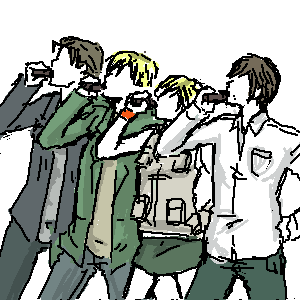
It just baffles me how these guys missed one of the most important tenets of horror: what you don't show is just as scary as what you do show. Before Silent Hill 3, you had to guess why everything was so screwed up. Are the people in the town evil? Is the town itself evil? Is everything a projection of your evil thoughts?
One very interesting and scary idea is that the game opens OUTSIDE of Silent Hill, and yet things are STILL fucked up. The explanation for this is Claudia, presumably one of the last members of the cult in Silent Hill trying to revive their old god, who coaxes Heather into following her to Silent Hill. It's bizarre, seeing our hero choose voluntary go there rather than being drawn in. This allows for a cut scene that is both excellent and infuriating. The darkness, the rain, the melancholy-ass music, the voice acting which actually makes Douglas' seem decent - it's such a tightly directed scene, unlike any other in the series. Unfortunately, it also includes the infamous "HERE'S WHAT HAPPENED" speech from Heather.
Well, it turns out the answer is cults. Doesn't that just make everything feel hokier? Like, "Oh, okay, let's get rid of the cult then?" It's too neat. It takes away a layer of mystery, a layer of fear, a layer of helplessness. The main problem is that Claudia is always ramming it down your throat in her faux British accent. "GOD is gonna bring PARADISE to the EARTH and it's gonna be fucking GRRREEEEeeeEEAAAAaaaaTttttTTTT!!!"
The most interesting thing about this set-up is Heather's motivation. When she decides to go to Silent Hill, its not to find her love or get to the bottom of a mystery - she's going to kill this bitch! The problem there is that the story is pretty predictable from that point on.
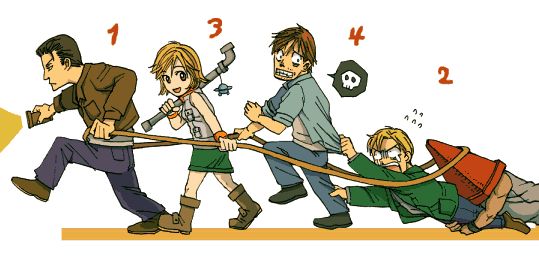
I make it sound like a travesty, but it's really not that bad. All of the artistic sensibilities of the previous games are there - the story's just a little goofy. But it still has that classic Silent Hill voice acting where you don't know if the actor is bad or if they're REALLY good at being on the verge of insanity.
Silent Hill 3's main claim to fame is the sheer amount of ridiculous easter eggs, including awesome weapons, potshots at Silent Hill 2, the definitive UFO ending, and a transformation sequence.

Silent Hill 4: The Room wasn't originally a Silent Hill, but Room 302. Apparently, it became a Silent Hill pretty far into its development. If it never became a Silent Hill, people would probably remember it more fondly.
Clearly, the core concept was always the same. Our protagonist is trapped in his apartment and must explore worlds via portals that appear as holes in the walls to find his way out. But why? That's when the team had to decide the frame of the story. Someone remembered an excerpt from a magazine lying inside a dumpster outside of the apartment buildings in Silent Hill 2.
The police announced today that Walter Sullivan, who was arrested on the 18th of this month for the brutal murder of Billy Locane and his sister Miriam, committed suicide in his jail cell early on the morning of the 22nd.So it was decided: Walter Sullivan would be retconned as a child raised in the ways of the town cult, seeking to use a horrible ritual to awaken his mother whom he believes is Room 302 in South Ashfield Heights, having been abandoned there when he was born as a baby, but ACTUALLY being tricked into reviving yet another old god. So not only would Silent Hill 4 continue this silly cult business, it would get Silent Hill 2 wrapped up into it as well. (In fact, one of James Sunderland's relatives is the super at South Ashfield Heights)
According to the police statement, Sullivan used a soup spoon to stab himself in the neck, severing his carotid artery.
By the time the guard discovered him, Sullivan was dead from blood loss, the spoon buried two inches in his neck.
An old schoolmate of Walter Sullivan's from his hometown of Pleasant River said "He didn't look like the type of guy who would kill kids.
"But I do remember that just before they arrest him he was blurting out all sorts of strange stuff like, 'He's trying to kill me. He's trying to punish me. The monster... the red devil. Forgive me. I did it, but it wasn't me!'"
The schoolmate then added, "I guess now that I think of it, he was kinda crazy."

Walter Sullivan is a very interesting character, despite his dubious origin and all attempts by the developers to make him into a vampiric, Nemesis-like, "Mwahahaha!" kind of villain. He has been wronged, and he truly believes he's doing the right thing. I think there's something really impeccable about his design, too, especially the serene look in his eyes. He's a creep, but there's something more than malicious intent in there.
Really, the game is about him. All of the locations come from his life, and at a point you are actually referred to as being inside of him. It makes sense, because the game certainly isn't about the playable character Henry Townshend, a well-voiced and handsome fella who has literally no personality and no personal connection to the plot. He was just in the wrong place at the wrong time. Henry's nothing but a vessel for the experiences of game - seriously, that's the reason Walter puts him through all of this.
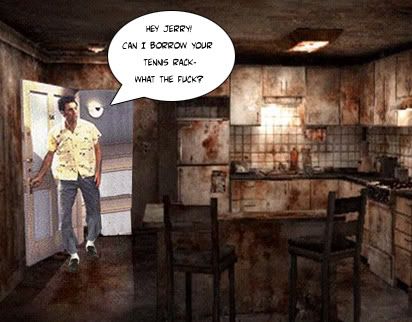
The best things about Silent Hill 4: The Room involved the room itself. You can't reach the outside world, but you can view it through the windows, the peephole in your front door and turn on the radio for a random, thematically relevant news bite. Being in it regenerates your health and it contains the only save point in the game, and slips of paper appear under the door as time goes on, slowly illuminating the reasons behind your imprisonment.
And then you reach a point in the game where something terrifying dawns on you: the room no longer regenerates your health. Not only that, but things begin to seem amiss. The clock ticks more rapidly. Your framed photos begin to change. There is a meowing coming from the refrigerator. Your house slippers are gone, leaving only a trail of bloody footprints. And then you find that getting near these hauntings actually decrease your health. From this point on, even going back to your own apartment to save presents its own risks. It's a brilliant reversal, and it's only compounded when you discover that clues to your own liberation were right under your nose all along.
The game really can pull off the set-up and the resolution. It's everything in between that's the problem.

Y'see, The Room is way more video gamey than the other Silent Hills. There's a HUD this time around: a life gauge, and even a little circle that measures the strength of your next blow. You have a limited inventory, like Resident Evil, and you don't pause the game to use items, which adds a whole new challenge to the proceedings. The game also progresses in an Eternal Darkness-esque level-based format. Once you're finished with one world, you're dropped back in your room, at which point you can get ready for the next.
It's all very mechanical. The level-by-level progression makes things predictable and much less scary - things don't really get tense until the end when the formula gets shaken up. And the main problem with the inventory system is that it kills the importance of puzzle-solving. Resident Evil took place in the real world, so running around to unravel the machinations of some eccentric scientist almost made sense, but in Silent Hill, where the world is an abstraction of the real world... I don't know, I just felt like Silent Hill was above the running back and forth and seeing loading screens again and again. Rather than go back to the room to make room for something I had to pick up I would often just waste bullets or restorative items. It's also BULLSHIT that, when a weapon breaks, it stays in my inventory until I put it away in the room. It's like: GET RID OF IT, Henry!
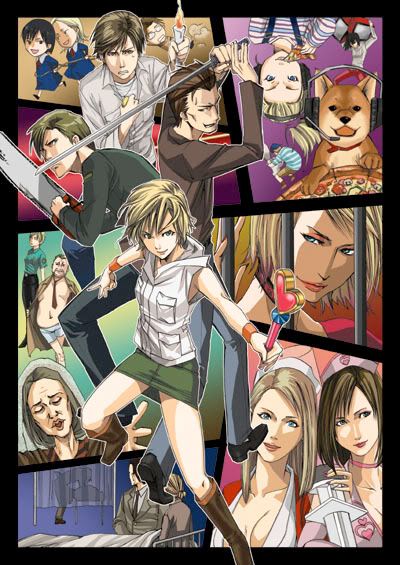
Speaking of Silent Hill as an abstract world, the first time I played through The Room, I really liked the designs of the worlds. While I still think the Water Prison is an amazing environment, I realized that the strangeness of the worlds actually made them less scary. In Silent Hill 3, you have to make your way through an office building that's under construction. It's full of perfectly normal and legitimate business, and, even if many of the doors are closed, the layout of the building is perfectly realistic. The fear came in discovering the subtle perversions of perfectly normal places. Concrete towers and hallways full of roaming wheelchairs, while interesting, are too weird to be believable. It's harder to be worried for my character in make-believe environments - it was already hard to worry about Henry.
The biggest stink everyone makes about the game, though, is that the second half of it requires you to go back to all of the places you've already been, and to drag your bewildered and (maybe) bewitched neighbor Eileen along with you - maybe the single biggest backtrack in video game history. I let this slide for some reason back when I first played it, but everyone's right. It's pretty much inexcusable. It's bad enough that they make you go through the whole game again with more annoying enemies, but the puzzles themselves are giant backtracks as well. Most of them involve leaving Eileen some place safe, going through the whole level beating up dudes and opening up doors, and then going back to get her so you can finally leave.
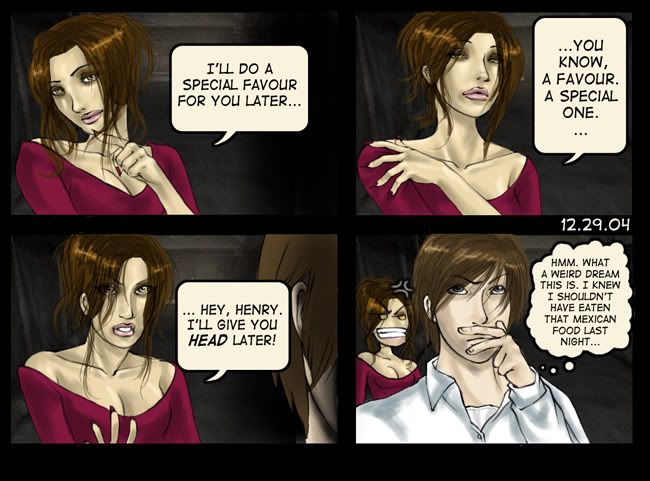
It's the most bogus artificial lengthening of a game that I could have imagined. And, y'know, it wasn't really necessary! The other Silent Hill games are, like, half the length. And, y'know, it's different from one point in Silent Hill 3, when you get to the room before the final boss, only to find that you don't have the final tarot card you need to solve the final puzzle. The only other thing here is a key. The message is clear: you must travel all the way back to the start of the area to open the only locked door and retrieve the final piece of the puzzle. It's a little annoying when you realize what you have to do, but I found the trip to be kind of exciting - dodging the new enemies that appeared, running as fast and making turns as tight as I could. And the best thing about it? It only happens once.
Most things in The Room seem to be designed to waste your time. The hallways and rooms are bigger and take more time to walk through, less doors are broken so you're actually encouraged to waste time looking for items you don't have the space to carry, and Henry draws his own map, which is of a surprisingly low resolution, and unlike Heather he doesn't keep notes of rooms that have puzzles to solve in them, so I hope you can remember.

Most of the guys in charge of The Room, while always members of Team Silent, were in such important roles for the first time. With the exception of the Twin Victims, most of the monster designs are bullshit, either being uglier versions of real animals, or ghosts. (Though Silent Hill ghosts are scarier than regular ghosts... but why is Cynthia's ghost just that same ol' Ring/Grudge girl with the long hair over the face? She didn't even have very long hair.) And the sound design? The dog monsters make that stock wildcat noise from Davy Crockett, King of the Wild Frontier when they attack. Oh how terrifying
It's tough to recommend Silent Hill 4. Unlike Silent Hill 3, which I'm still fond of, it's harder to pull my punches on 4. The climax into the final boss fight are brilliant, some of the hauntings are great, but the concept could only carry it so far. And on top of everything else, there's no joke ending.
Fortunately, unlike Sonic Team or Midway, Team Silent knew when they had run out of steam. They quietly disbanded after The Room.

1 comment:
"I never understood the hate that Silent Hill 4 gets, Silent Hill 3 is where the series started to stagnate, an awful lot of people like to blame SH4, but that's a weak argument. In order to stagnate, you have to remind the same, The Room was the experimental chapter in the series, whether the result of those experiments was new and existing or a rampaging Frankenstein monster is up to debate. But there's no denying that team silent went through a change-up on the fourth game, so any accusations that the series was beginning to atrophy on SH4 is full of shit. SH4 is the black sheep of the franchise, it's also my favorite game in the series."
--xRazorFistx
Post a Comment